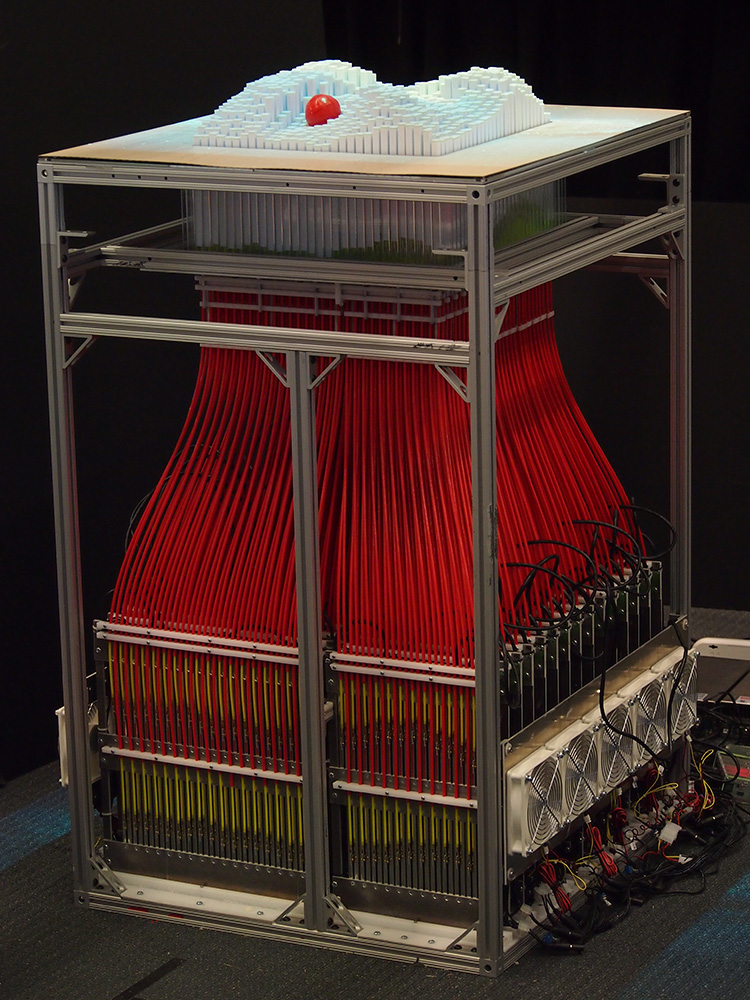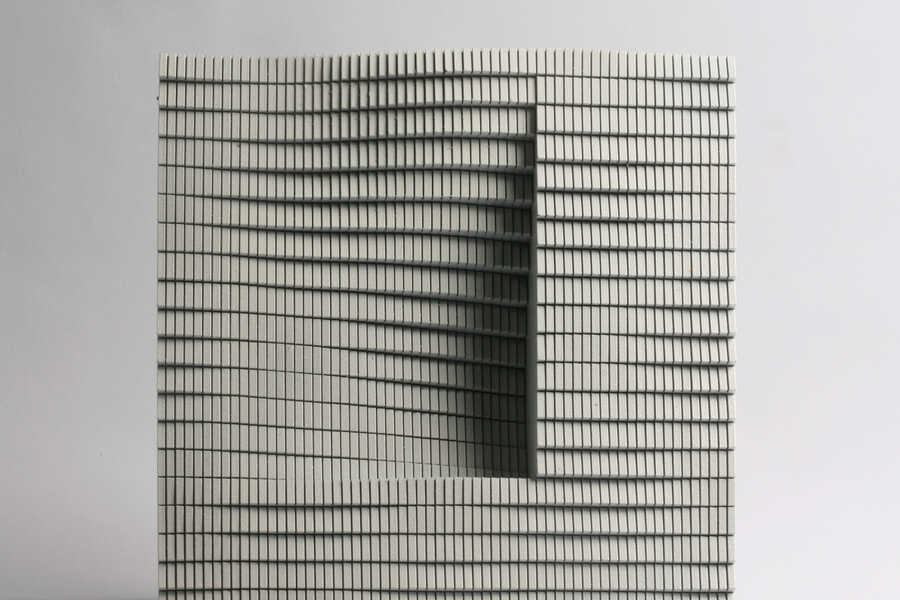algorithmic modeling for Rhino
hi,
I want to define a grasshopper definition for a wavy surface which is irregular. I defined the strip definition of the attached image. but I don't know how to define an IRREGULAR wavy surface. would you please help me? attached are the intended image, and the files.
Views: 3104
- Attachments:
Replies to This Discussion
-
Define 'irregular'. I can't quite map the intended image to your files. The image seems to have angled strips which are cut at regular intervals. It also seems to rely on two different base surfaces with some sharp transitions between them. Furthermore the strip tilting is not parallel to the base surfaces, but instead seems to have a logic of its own, but I can't see what it would be.
-
- Attachments:
-
-
It is awesome! The yellow surface you created is exactly what I want to get, out of a flat surface. The surface must be limited between the BLACK and GREEN surface.
-
-
Also this from MIT must be shown (again)

-
-
Yeah the order of box corners is known so you can figure out what the quad indices need to be. I was going to use a regukal mesh box and copy its faces, but regular mesh boxes have unwelded edges and thus consist of 24 vertices instead of 8.
-
-
Thx!
BTW... still not sure if faces are sloped or not, but bricks:
-
-
This is the exact wall on which I am going to apply the wavy surface and pattern you prepared.
- Attachments:
-
-
Thank you David. excuse my bad English. By 'irregular' i mean multi-curved surface. totally, I don,t know how to get a multicurved surface. I was trying to have a simple flat surface, then I could get the points extracted from Divide Surface command, then I should be able to move it up and down randomly to get a random wavy surface. But I don't know how to move in Z and -Z direction randomly.
-
-
You can make a doubly curved surface by generating non-developable control or interpolation points. Either using an expression like I did for the small waves, or perhaps using some sort of attractor logic. There are so many ways to make curved surfaces that you're going to have to tell us how you want to define this surface. Do you want to use mathematical equations? Do you want to interpolate through a grid of points? Interpolate through random points? Have the surface cover some collection of objects?
-
-
Thank you sooooo much for consideration. as you see in the attached image that I just draw, I want to have a doubly curved surface between two curved surface (black line is surface No1 and Green line is surface No2). The red line is the surface I want to have. I aim to have the RED surface screwed to the BLACK surface, and the GREEN surface is a boundary that I must not exceed. Is it clear? I truly appreciate it.
- Attachments:
-
-
That's quite tricky as you're looking for tangency relationships between the red and the green surface. That means you cannot just generate some random points and interpolate or patch them, as the tangency at those points is not controllable.
I attached a file that creates a random surface in between two boundary surfaces, but it doesn't have the tangency constraints (or even coincidence constraints) yet.
- Attachments:
-
© 2025 Created by Scott Davidson.
Powered by
![]()

